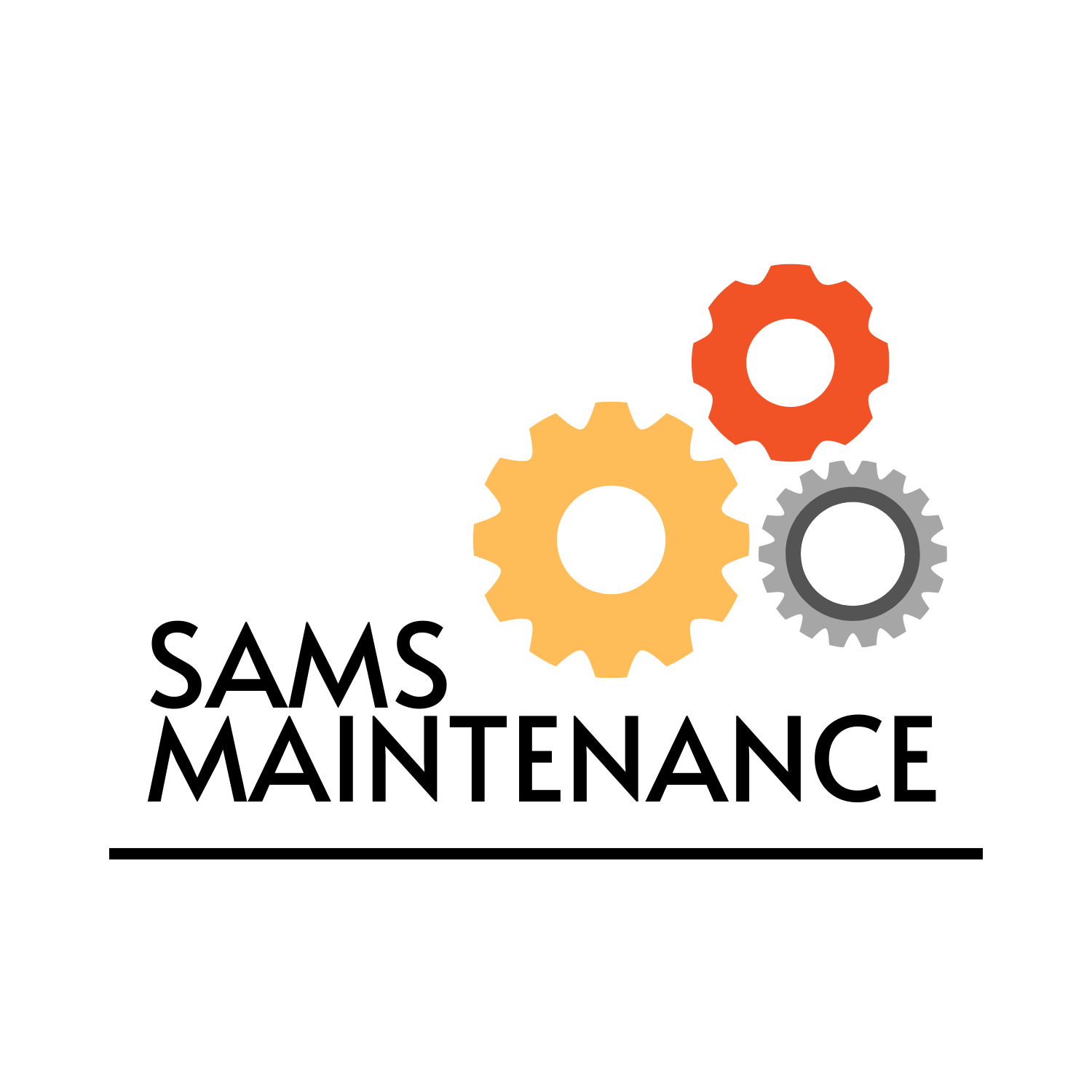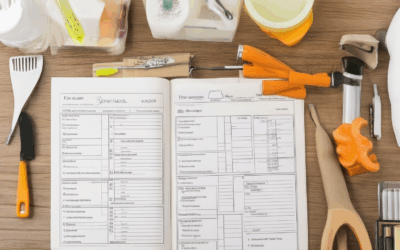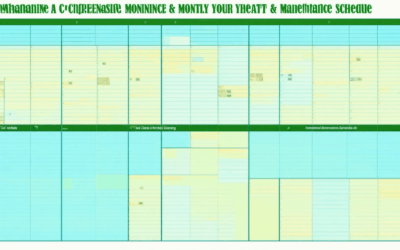Keeping your home well-maintained is essential for preserving its value, ensuring safety, and providing a comfortable living environment. While some homeowners may overlook routine tasks, understanding the basics of house maintenance is crucial for long-term success. Whether it’s addressing minor fixes or overseeing major systems, having a structured approach ensures your property remains in excellent shape year-round. With a comprehensive checklist tailored to your needs, you can stay organized, tackle tasks efficiently, and avoid costly repairs down the line. From seasonal routines to budget planning, this guide offers actionable insights to help you master the art of home maintenance. By following these essential basic house maintenance ideas, you’ll not only protect your investment but also gain peace of mind knowing your home is in great hands.
Key Takeaways
– Allocate 1-4% of your home’s value for annual maintenance to budget effectively and prevent costly repairs.
– Use a maintenance checklist to stay organized and ensure all critical tasks are addressed.
– Adopt the 6:1 maintenance ratio to prioritize preventive measures and minimize corrective costs.
– Plan for regular maintenance across exteriors, interiors, landscaping, and utility systems to keep your home in top shape.
– Consult professionals for complex tasks to avoid potential pitfalls of DIY projects.

What Routine Maintenance Is Required for a House?
Keeping your house in great shape requires regular maintenance to prevent issues before they arise. Here’s a comprehensive guide to the essential tasks:
- Exterior Maintenance
- Gutter Cleaning – Remove debris and check for leaks.
- Roof Inspection – Look for missing shingles or damage.
- Painting – Refresh exterior surfaces every 3-5 years.
- Deck Maintenance – Check for warped boards or loose nails.
- Window Checks – Inspect frames for cracks or peeling paint.
- Interior Maintenance
- Cleaning – Dust, vacuum, and mop regularly.
- Flooring – Inspect for wear and tear or stains.
- Appliances – Clean coils, vents, and exhaust fans.
- Bathrooms – Check for water damage and leaky fixtures.
- Kitchen – Clean sinks, stovetops, and cabinets.
- HVAC and Plumbing
- Filter Changes – Replace or clean air filters monthly.
- AC Check – Ensure units are running efficiently.
- Water Heater – Flushing and testing for leaks.
- Drain Cleaning – Use a snake to remove clogs.
- Electrical Systems
- Outlet Checks – Test GFCIs and replace faulty outlets.
- Switchboards – Inspect for tripped breakers.
- Lighting – Replace bulbs as needed and clean fixture plates.
- Landscaping
- Lawn Care – Mow, edge, and fertilize regularly.
- Garden Maintenance – Prune trees and shrubs.
- Patio and Driveway – Clean and check for cracks.
What is General House Maintenance?
General house maintenance refers to the routine tasks and periodic checks required to keep a home in good condition. These activities help prevent issues before they escalate, ensuring safety, comfort, and longevity of the property. Below are key components of general house maintenance:
Regular Cleaning and Inspection
- Cleaning Surfaces : Regularly clean exterior surfaces such as gutters, windows, decks, and siding to remove dirt, debris, and mold. This prevents premature wear and tear.
- Inspect for Damage : Check for cracks, peeling paint, or loose caulking around windows and doors. Address these issues promptly to maintain energy efficiency and structural integrity.
- Gutter Maintenance : Clean and inspect gutters to ensure proper drainage, preventing water damage to roofs and foundations.
Repairs and Renovations
- Fix Leaks : Address plumbing leaks, roof leaks, and other water-related issues immediately to avoid further damage.
- Replace Old Parts : Regularly replace worn-out components like roofing materials, HVAC systems, and appliances to ensure optimal performance.
- Landscaping : Maintain lawn, trees, and shrubs to prevent overgrown growth that could harm the property or cause damage to neighboring structures.
Utility System Maintenance
- Plumbing Systems : Inspect pipes for leaks and corrosion. Replace old pipes or fixtures to reduce the risk of breakdowns.
- Electrical Systems : Check for outdated wiring and malfunctioning circuits. Consider upgrading to modern safety features like circuit breakers.
- HVAC Systems : Schedule regular tune-ups to ensure efficient operation and prevent costly repairs. Replace filters monthly to maintain airflow and energy efficiency.
- Landscaping Lighting : Test outdoor lights and fixtures to ensure proper functionality and safety.
By staying proactive with these maintenance tasks, homeowners can protect their investment and enjoy a safe, comfortable living environment. For professional guidance and resources, visit Sams Maintenance to find detailed tips and expert advice tailored to your home’s needs.

Home Maintenance Checklist: 10 Essential Tasks to Keep Your House in Shape
Regular home maintenance is crucial for preserving the value of your property and preventing costly repairs. Here’s a detailed guide to help you stay on top of essential tasks:
1. Foundation Check-Up
- Inspect the foundation for cracks or signs of movement.
- Look for gaps between the foundation and the soil.
- Consider hiring a professional for a thorough inspection if you notice significant issues.
2. Gutter and Downspout Cleaning
- Clean gutters and downspouts to prevent clogs and water overflow.
- Trim tree branches near the roof to keep gutters clear.
- Check for rust or damage and repair as needed.
3. Leak Detection
- Inspect pipes, faucets, and hoses for visible leaks.
- Test water pressure in hoses and sprinklers.
- Address any detected leaks promptly to avoid further damage.
4. HVAC System Care
- Change or clean air filters monthly to ensure optimal airflow.
- Inspect vents for blockages or damage.
- Schedule professional servicing to maintain efficiency.
5. Electrical System Inspection
- Check outlets and switches for signs of wear or tripping.
- Update outdated wiring to ensure safety and functionality.
- Hire an electrician for any necessary upgrades or repairs.
6. Plumbing Fixture Checks
- Examine handles, showers, and sinks for leaks or loose connections.
- Fix dripping faucets immediately to conserve water and energy.
- Consult a plumber for any complex plumbing issues.
7. Exterior Surface Inspections
- Inspect decks, siding, and driveways for cracks or peeling paint.
- Seal wood surfaces to protect against moisture and decay.
- Replace any rotten wood to prevent structural damage.
8. Fire Safety Measures
- Test smoke detectors and carbon monoxide detectors monthly.
- Ensure fire extinguishers are accessible and functional.
- Practice emergency exit drills with your family.
9. Landscaping and Yard Maintenance
- Clear gutters and trim trees to prevent debris buildup.
- Mow the lawn regularly and fertilize as needed.
- Inspect for invasive plants and remove them to protect your property.
10. Window and Door Checks
- Look for drafts around windows and doors.
- Ensure doors and windows open and close smoothly.
- Weatherproof windows and doors to enhance energy efficiency.
Additional Tips
- Schedule an annual professional home inspection to catch潜在问题。
- Keep a tool kit handy for quick fixes and maintenance tasks.
- Document findings with photos for future reference.
By following this checklist and staying proactive, you can maintain your home in excellent condition and enjoy a safe, comfortable living environment. Remember to address any issues promptly and consult professionals when necessary to ensure the best outcomes.

What is the 1 Rule for Home Maintenance?
Home maintenance is crucial to ensure your property remains in great shape and avoids costly repairs down the line. While there are many guidelines to follow, one essential rule is:
- Inspect and maintain your home systems regularly.
- Plan for annual professional inspections to catch potential issues early.
- Set aside a portion of your budget based on your home’s value for repairs and improvements.
- Check for leaks, wear, and damage in critical areas like pipes, roofs, and appliances.
For comprehensive guidance, consult professionals who specialize in home maintenance. At Sams Maintenance, we offer expert advice and reliable services to keep your home in peak condition. Explore our full range of services to find everything you need for maintaining your property effectively.
Rule of Thumb for House Maintenance Costs
The general guideline for budgeting house maintenance costs is to allocate between 1% to 4% of your home’s assessed value annually. This percentage covers routine upkeep, repairs, and replacements. For example, if your home is valued at $200,000, you should plan to spend between $2,000 and $8,000 each year on maintenance tasks.
Breaking Down Maintenance Costs
Here’s a breakdown of common expenses:
1. Exterior Maintenance
- Roofing: Annual checks for leaks or damage. Repairs can cost $500 to $1,500 depending on the size.
- Siding: Replace or repair siding every 10-20 years. Costs vary based on material quality.
- Painting: A full exterior paint job typically costs $3,000 to $6,000.
2. Interior Maintenance
- Appliances: Annual checks for functionality and safety. Repairs can range from $100 to $500.
- Flooring: Replacing carpet or tiles can cost $800 to $3,000.
- Plumbing: Leaky pipes or fixtures may require $150 to $500 for fixes.
3. Landscaping
- Lawn Care: Monthly services can cost $50 to $100.
- Tree Trimming: Prices range from $250 to $1,000 annually.
4. Utilities and Systems
- HVAC: Annual tune-ups cost around $100 to $300.
- Water Heater: Replacement can range from $700 to $3,000.
Tips for Managing Costs
- Create a maintenance checklist to track tasks.
- Schedule regular inspections to catch issues early.
- Consider DIY projects for minor fixes.
- Invest in high-quality materials to reduce frequent replacements.
By following this guide, you can budget effectively and keep your home in great shape. For more details on specific tasks, explore our home upkeep tips .

The Maintenance Golden Rule Explained
The maintenance golden rule is a simple yet effective strategy for optimizing property upkeep. It suggests that for every six preventive maintenance (PM) measures performed, one corrective maintenance (CM) measure should be implemented. This balanced approach ensures that potential issues are addressed before they escalate, saving costs and extending the lifespan of your assets.
Understanding the Ratio
The 6:1 ratio emphasizes the importance of proactive maintenance. Here’s why it works:
- Preventive Maintenance (PM): This involves routine checks and tasks aimed at preventing equipment failure or wear and tear. Examples include oil changes, filter replacements, and inspections.
- Corrective Maintenance (CM): This occurs when a problem arises and requires immediate attention. CM is often more costly and time-consuming than PM.
By maintaining this balance, you reduce the likelihood of unexpected breakdowns and extend the useful life of your systems or equipment.
Why the Ratio Matters
Adhering to the 6:1 rule can lead to several benefits:
- Cost Efficiency: Preventive measures are generally cheaper than correcting issues after they’ve caused damage.
- Extended Equipment Life: Regular PM helps identify and fix minor issues before they become major problems.
- Reduced Downtime: Proactive maintenance minimizes unexpected failures, reducing downtime for businesses and residents.
Implementing the Rule
To apply the maintenance golden rule effectively:
- Create a Schedule: Establish a regular schedule for PM activities based on manufacturer recommendations and asset-specific needs.
- Track PM Completion: Keep records of all PM tasks completed to ensure the 6:1 ratio is maintained.
- Address CM Needs Promptly: Whenever a CM task arises, ensure it is resolved promptly to avoid further complications.
Conclusion
The 6:1 maintenance golden rule is a cornerstone of effective asset management. By prioritizing preventive measures and addressing corrective needs appropriately, you can ensure the longevity and reliability of your systems. Regularly reviewing and updating your maintenance plan will help maintain peak performance and efficiency.




0 Comments